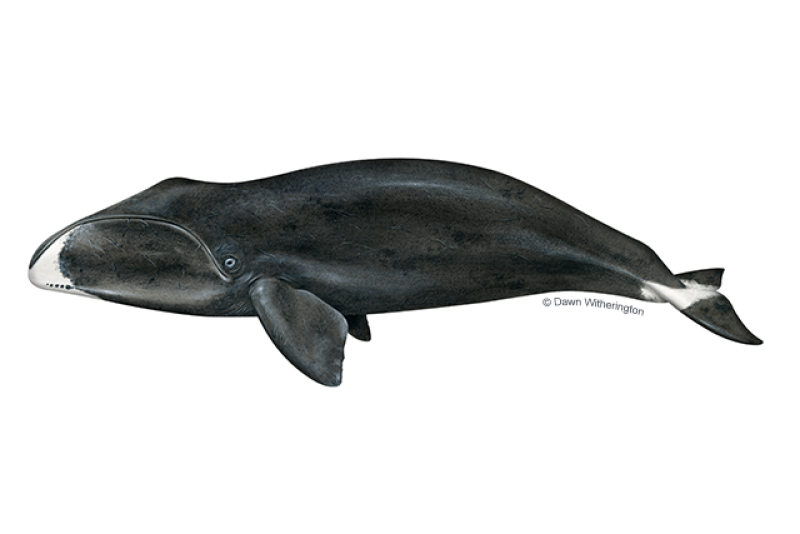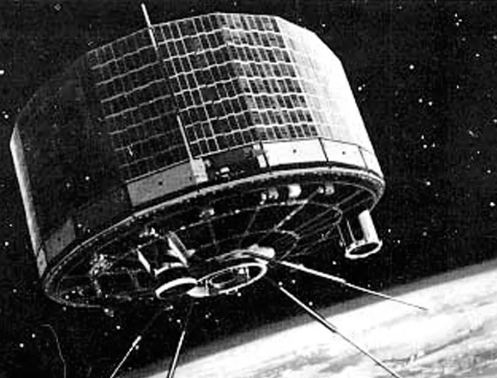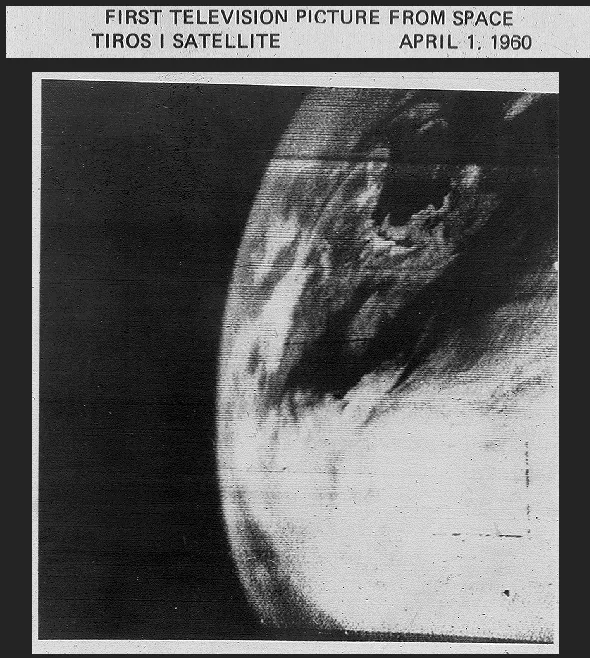## A Sky-High Milestone: 65 Years of Eyes on the Storm
Before smartphones, before Doppler radar, before weather apps predicted your afternoon showers with unsettling accuracy, there was TIROS-1. Launched on April 1, 1960, this unassuming satellite became a beacon in the sky, the world’s first dedicated weather satellite, forever changing the way we understand and interact with our planet’s ever-changing atmosphere.

Celebrating 65 Years of the World’s First Weather Satellite – National Oceanic and Atmospheric Administration (.gov)

The launch of TIROS-1 on April 1, 1960, marked a significant milestone in the development of weather satellite technology and forecasting capabilities. Weighing approximately 270 pounds and carrying two television cameras and two video recorders, the satellite provided weather forecasters their first-ever view of cloud formations as they developed around the globe.
“It really was a milestone in the history of weather observation,” said Stephen Volz, Ph.D., Assistant Administrator of NOAA’s Satellite and Information Service. “TIROS-1 changed our perspective. Up to that point, we were very local in our understanding and our interpretation of weather phenomena.”
Despite the Significant Advancements in Weather Satellite Technology and Design, There Are Still Challenges to Be Addressed

Despite the significant advancements in weather satellite technology and design, there are still challenges to be addressed, including the need for more accurate data, improved forecasting capabilities, and better decision-making.
- The development of new weather satellite systems and technologies is ongoing, with a focus on improving resolution, data analysis, and forecasting capabilities.
- Future directions for weather satellite technology include the development of more advanced sensors, improved data processing and analysis, and the integration of satellite data with other weather data sources.
Lessons Learned and Implications
Importance of Early Warning Systems
The launch of TIROS-1 marked the beginning of a new era in weather observation and forecasting, highlighting the importance of early warning systems in emergency management.
- The development of satellite-based weather systems has demonstrated the potential of early warning systems in reducing the impact of severe weather events.
- The integration of satellite data with other weather data sources has enabled the development of more advanced early warning systems, leading to improved decision-making and reduced impacts.
- The development of satellite-based weather systems has demonstrated the benefits of collaborative research and development, including improved accuracy, forecasting capabilities, and decision-making.
- The integration of satellite data with other weather data sources has enabled the development of more advanced weather forecasting models, leading to improved predictions and decision-making.
The importance of early warning systems cannot be overstated. The development of satellite-based weather systems has demonstrated the potential of early warning systems in reducing the impact of severe weather events. The integration of satellite data with other weather data sources has enabled the development of more advanced early warning systems, leading to improved decision-making and reduced impacts.
Benefits of Collaborative Research and Development
The launch of TIROS-1 was a result of collaborative research and development efforts between NASA, NOAA, and other organizations.
The benefits of collaborative research and development cannot be overstated. The development of satellite-based weather systems has demonstrated the benefits of collaborative research and development, including improved accuracy, forecasting capabilities, and decision-making. The integration of satellite data with other weather data sources has enabled the development of more advanced weather forecasting models, leading to improved predictions and decision-making.
Celebrating the Past, Preparing for the Future
Honoring the Legacy of TIROS-1
The launch of TIROS-1 marked a significant milestone in the development of weather satellite technology and forecasting capabilities.
The satellite’s contributions to the field of meteorology have been recognized, and its legacy continues to inspire new generations of researchers and scientists.
The development of modern weather satellites has built upon the foundation laid by TIROS-1, enabling more accurate forecasts, improved decision-making, and better preparedness for severe weather events.
Looking to the Future
As weather satellite technology continues to evolve, it is essential to recognize the importance of continued research and development in this field.
The development of more advanced weather satellites and technologies is ongoing, with a focus on improving resolution, data analysis, and forecasting capabilities.
Future directions for weather satellite technology include the development of more advanced sensors, improved data processing and analysis, and the integration of satellite data with other weather data sources.
Conclusion
As we celebrate 65 remarkable years of the World’s First Weather Satellite, the National Oceanic and Atmospheric Administration (NOAA), the nation has witnessed unprecedented advancements in meteorological research, communication, and global cooperation. This groundbreaking achievement, launched on April 1, 1958, revolutionized the way weather forecasts are generated, disseminated, and analyzed, forever changing the way we navigate our increasingly interconnected world.
The significance of the National Weather Service (NWS) satellite program cannot be overstated. By providing critical data and imagery, satellites like the geostationary weather satellite (G3) and the polar-orbiting weather satellites (P4 and P3) have enabled scientists to better understand and predict weather patterns, leading to improved forecasting capabilities and increased public safety. This, in turn, has enabled the early warning systems for severe weather events, saving countless lives and reducing economic losses.
As the world continues to evolve and grow, the role of the National Weather Service will undoubtedly remain crucial. As we approach the next 65 years of space exploration, it is imperative that we prioritize the development of more advanced weather satellites, such as the next-generation weather satellites (G5 and G6) and the commercial weather satellites. By harnessing the power of space technology, we can unlock new insights into the Earth’s climate, better mitigate the impacts of climate change, and create a more resilient and sustainable future for all.
As we look to the future, the question remains: what will be the next frontier in weather satellite technology? Will we see a continued push towards more advanced imaging capabilities, or will we see the development of new, innovative applications for weather satellites? Whatever the answer may be, one thing is certain – the National Weather Service will continue to lead the way, driving progress and innovation in the pursuit of a more weather-aware and sustainable world.
